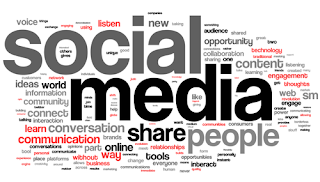Digital media has been something which I've been extremely interested in. Mainly because it's fun, it's interactive, helps you connect and is in fact, quite practical. I've worked for a tech company where it was necessary for me to incorporate digital media in my daily work routine. We used Google docs for almost everything - from inter-office brainstorming sessions (Delhi-Ann Arbour-California) to planning the next team offsite. We all had our calendars linked and you could view anyone's calendar in the office - extremely helpful when we had to schedule meetings. Google Analytics was something I was trained for as a part of my job and I, in my completely unbiased opinion, believe that it's one of the best analytics softwares out there. It helps you track your website data - who's clicking, what keywords are being used, you can set golas and funnels to see if there's a certain pattern in which your website is being viewed and many more other extremely helpful features.
This is the more serious stuff. I suppose my generation was, or I should say, is, the part of the social media revolution. I remember my first social networking account - Hi5, and then there was Orkut (developed by Google, mostly popular in India and Brazil!) and then came Facebook and Twitter. Facebook still happens to be one of my favorite means of entertainment. I'm not extremely active but I do like to read what other people have been posting. I think I created a twitter account the day I heard about it, which was quite a while back. But then, I deleted it in a few days. For me, it was like facebook, but only with status messages...and no fun! As a part of my digital media and PR class I had to create another one and I did begin to be a bit more active on it. But I'm still on a huge twitter fan (a future job in PR may change that view completely.) I do realise it's importance in some areas. For example, during the Japan earthquake, when all the phone lines went down, there were a huge amount of twitter updates by people in Japan, letting their friends and family know of their whereabouts.
I'm not going to delete my account this time. I do get some interesting tid-bits of news once in a while.
One if the things I was introduced to in the digital media class and did get hooked on to is StumbleUpon, which lets you share and discover new websites with every click, depending upon your preferences which you select while creating an account. I can spend hours on StumbleUpon and not get bored.
As a futre PR professional, I can use all of this new knowledge to my advantage. I can look for jobs using LinkedIn. Once I have a job, I can track my campaigns using Google Analytics. We can use wikis at work to create and edit any amount of content online among a group, having the ability to comment on that content as it's being edited. Since there is a huge amount of population which is online, we can target them using facebook, twitter, youtube and so on. Apart from networking, a lot of information can be shared through blogs. What I really learnt in this class is not really about the existence of these websites and softwares but their application in the real world.





